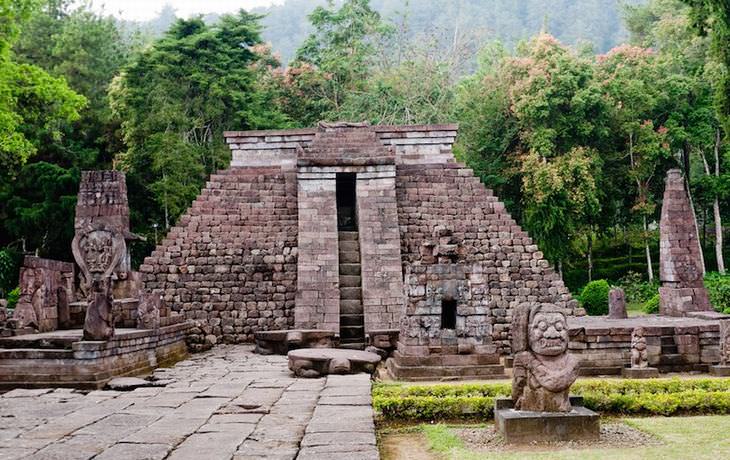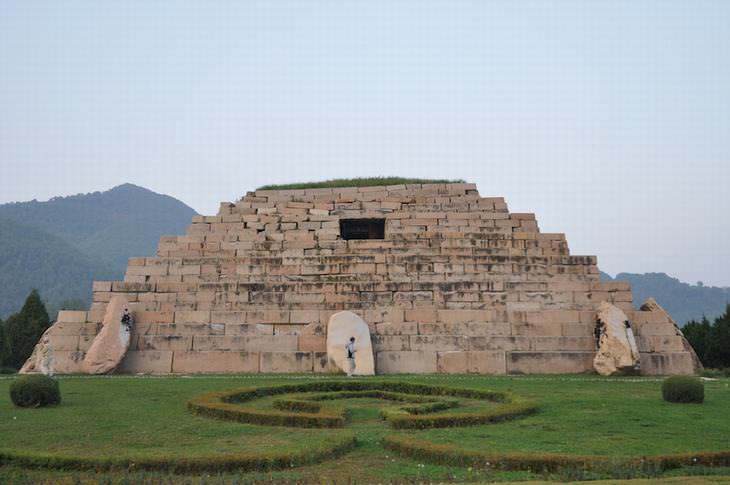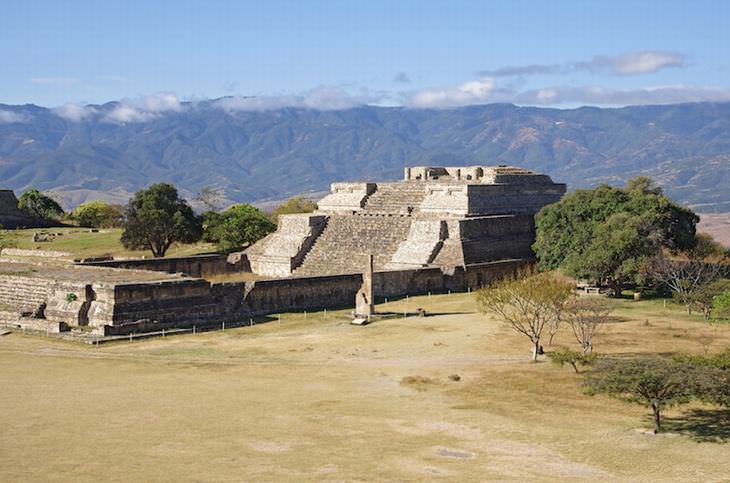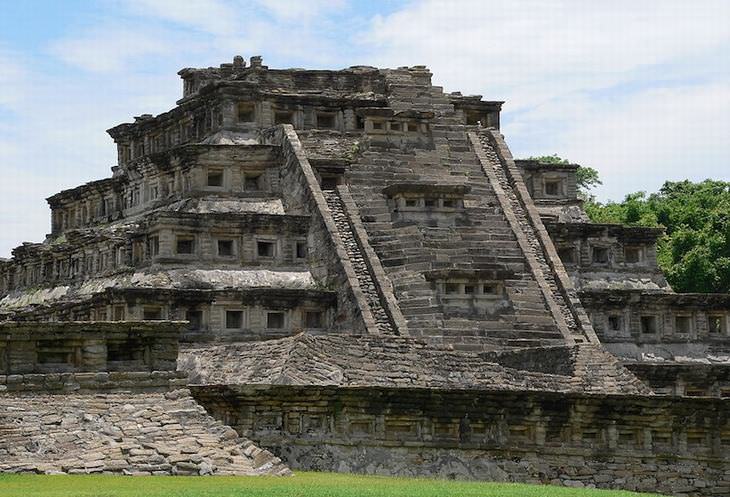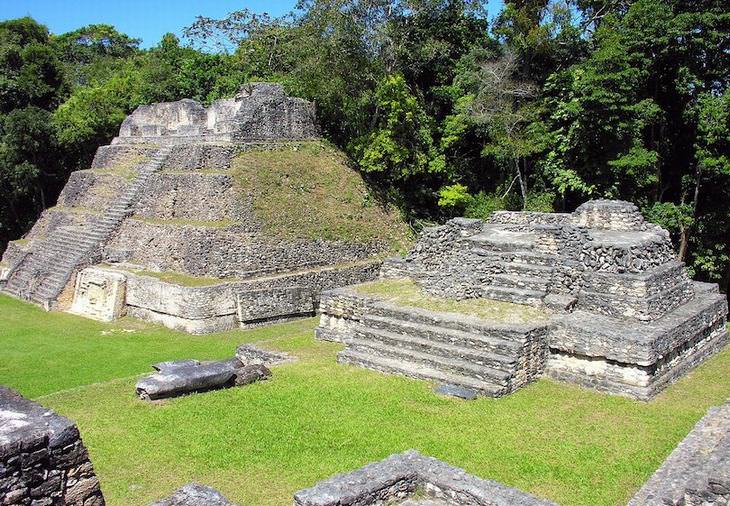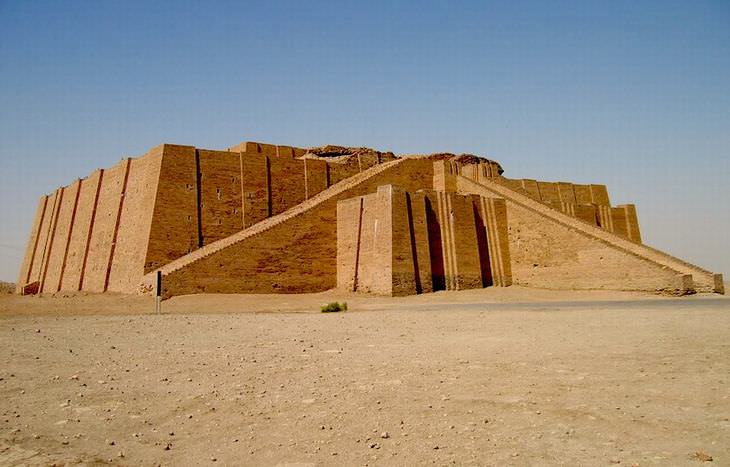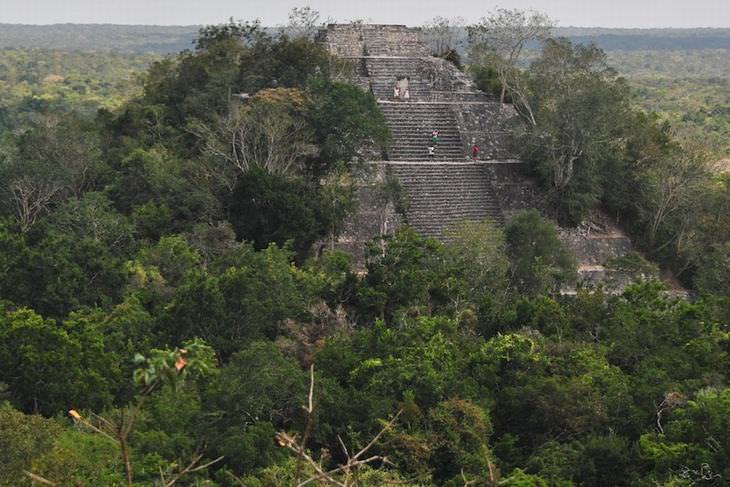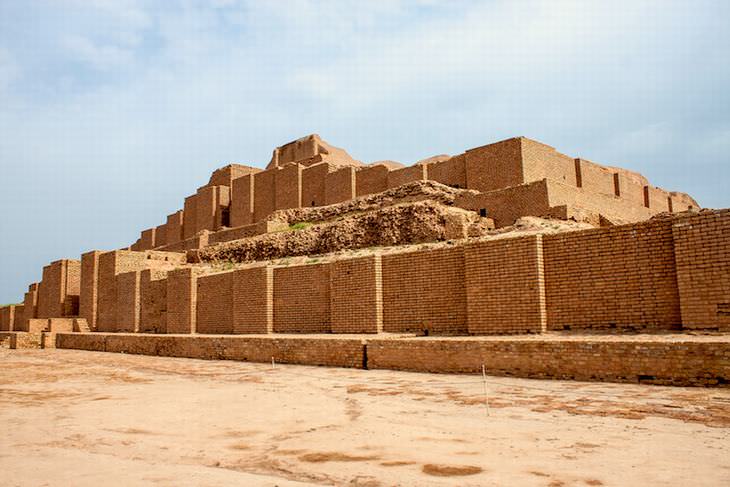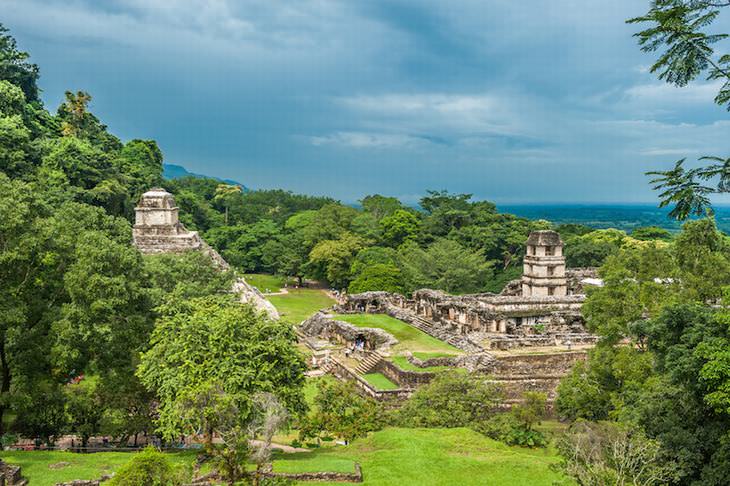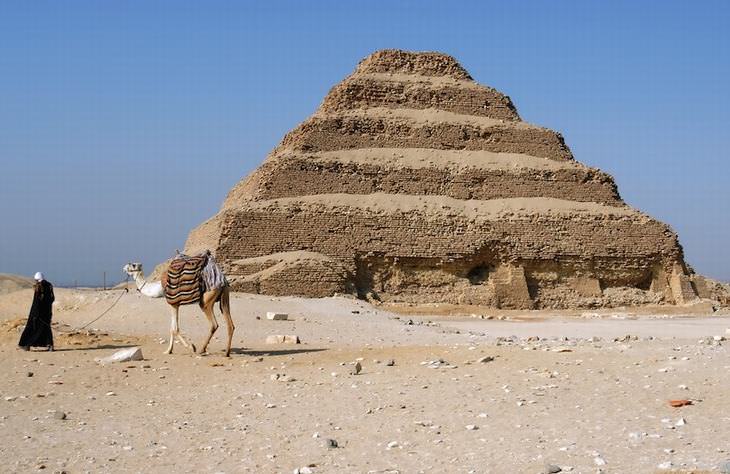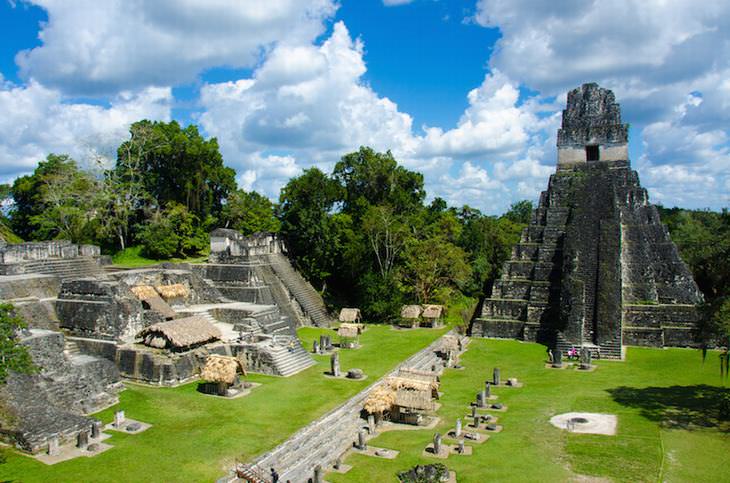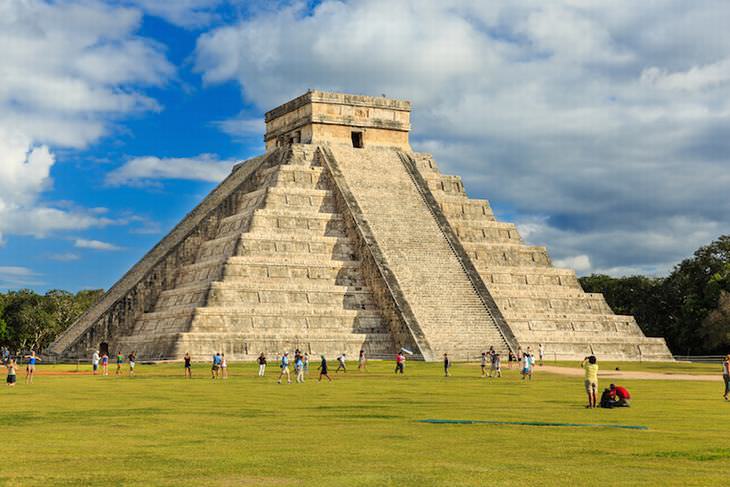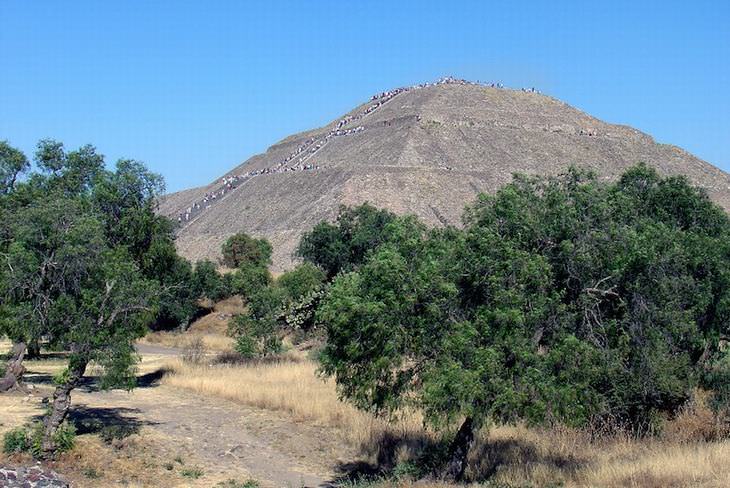14. Candi Sukuh
Unlike the ornate and grandeur typical of most Javanese Hindu-Buddhist temples, Candi Sukuh exhibits a strong simplicity, featuring rough and minimalist geometric forms. Its main structure is a truncated pyramid, resembling the Mayan or Aztec step pyramids found in Mexico, rather than the tiered Meru towers found in traditional Balinese and Indian temples. This divergence from the classic design has led many to ponder the influences and circumstances that shaped its unique aesthetic.
The temple complex was constructed towards the end of the Majapahit Kingdom, around the 15th century, during a period of declining Hindu influence on the island. Some have suggested this may account for the temple's significant departure from traditional architectural norms. Furthermore, it is also seen as a symbol of the syncretism and adaptation of foreign ideas into Javanese culture and religion.
If you visit, be prepared, though – the artwork that adorns it is quite raunchy in places!
13. Tomb of the General
The Tomb of the General, also known as the Pyramid of the East, is the alleged burial site of King Jangsu, a notable ruler of the Goguryeo Kingdom in Korea. During his long reign from 413-491 AD, the kingdom expanded its borders from Mongolia to Chungju. The pyramid-like tomb, nestled in Ji'an, Jilin, China, stands as a testament to Goguryeo's grandeur and the prominence of its esteemed monarch.
12. Monte Alban
Monte Alban is a significant pre-Columbian archaeological site situated high above the Valley of Oaxaca, Mexico. Dating back approximately 2,000 years, it is notable for its two large pyramid-like structures surrounded by stepped platforms and terraces. This monumental site, elevated over 1,300 feet above the valley floor, was a vital ceremonial center and a testament to the architectural and cultural prowess of the Zapotec civilization, the original inhabitants of the area. The intriguing remnants of this ancient city offer a unique window into the region's rich and complex history.
11. El Tajin
El Tajin, also known as the Pyramid of the Niches, was constructed during the time of the Classic Veracruz culture, and most buildings on the site were constructed between 600 and 900 AD. The pyramid features architecture that is unique in the Americas, and rises 66 feet on seven different layers.
10. Caracol
Caracol, the largest Maya site in Belize, boasts the impressive Canaa pyramid, also known as the Sky Place. Standing at 143 feet tall, it remains the tallest man-made structure in the country to this day. The ancient city of Caracol once spanned approximately 65 square miles and reached its zenith around 650 AD, housing an estimated population of 150,000 people. The monumental scale of Caracol and its towering pyramid serve as a testament to the advanced architectural and cultural achievements of the ancient Maya civilization.
9. The Great Ziggurat of Ur
The Great Ziggurat of Ur, an iconic edifice situated in modern-day Iraq, is the best-preserved monument from the ancient Sumerian period. This remarkable architectural marvel was initially completed in the 21st century BC by King Shulgi, who proclaimed himself a god-king. The ziggurat underwent significant reconstruction during the 6th century BC under the Babylonian King Nabonidus, reflecting the evolving political and cultural landscape of the region. Surprisingly, its most recent renovation took place in the late 20th century, under the controversial rule of Saddam Hussein, highlighting the enduring importance of this structure in the cultural heritage of Iraq. This massive step pyramid remains a testament to the architectural prowess and religious devotion of ancient Mesopotamian civilizations.
8. Calakmul
Calakmul, located in Mexico, is one of the largest Mayan cities ever built, boasting over 6,500 ancient structures. The site's crowning glory is Pyramid I, an impressive 180-foot-high edifice. Constructed atop a pre-existing temple, this ingenuity allowed it to attain its remarkable height. Calakmul offers an expansive and immersive insight into the architectural genius and cultural richness of the Mayan civilization.
7. Chogha Zanbil
Chogha Zanbil, located in present-day Iran, is an ancient ziggurat built by the Elamites around 1250 BC under King Untash-Napirisha to honor their deity, Inshushinak. While it appears to be a sequence of stacked platforms, the structure intriguingly comprises five towers of varying heights. This exceptional architectural design, unique to the Elamite civilization, offers an insightful glimpse into the spiritual and cultural practices of this ancient society.
6. Palenque
Palenque, situated in present-day Chiapas, Mexico, is an archaeological treasure trove of the ancient Mayan empire, with most structures dating from 600 to 800 AD. Notably, the Temple of Inscriptions sets itself apart from other Mayan temples as the sole Mesoamerican pyramid built as a funerary monument. This unique feature offers invaluable insight into the architectural and ceremonial practices of the Mayans, underscoring their diverse cultural expressions.
5. Uxmal
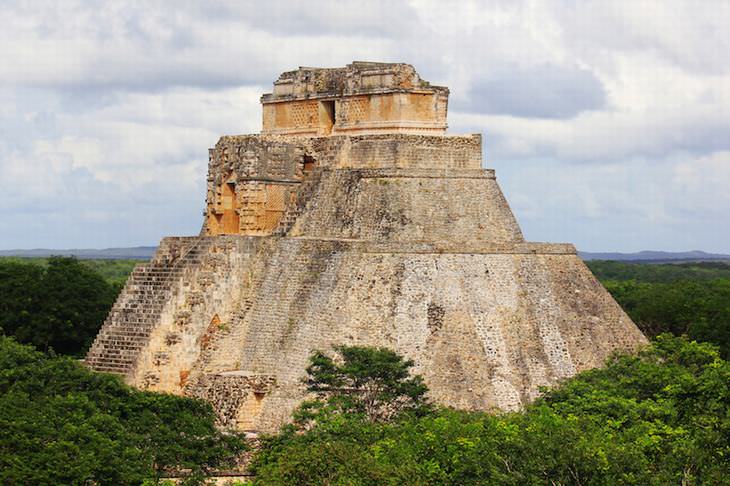
Uxmal, meaning "built three times" in the Mayan language, is one of Mexico's best-preserved ancient sites. The city's monumental highlight is the 115-foot-high Temple of the Magician, unique for its atypical oval layers, a departure from the more conventional square or rectangular designs seen in other Mayan pyramids. The temple's construction is believed to have occurred in five distinct stages, spanning from the 6th to the 10th centuries. This architectural jewel exemplifies the evolving building techniques and stylistic preferences of the Maya civilization, making Uxmal a captivating site for understanding the cultural and architectural progression of this ancient civilization.
4. Step Pyramid of Djoser
The Step Pyramid of Djoser, dating back to the 27th century BC, holds the distinction of being the first pyramid ever constructed in Ancient Egypt. Commissioned by Vizier Imhotep for Pharaoh Djoser, it features six distinct layers, standing at an imposing height of 203 feet. Notably, its underground labyrinth of tunnels conceals hidden burial chambers, presenting a mesmerizing architectural marvel that underscores the ingenuity and cultural richness of ancient Egyptian civilization.
3. Tikal
Tikal, an extraordinary Mayan archaeological site, was a thriving city between 200 and 900 AD, housing an estimated 100,000 to 200,000 inhabitants. The site boasts six grand step pyramids, the largest of which is Temple-Pyramid IV. Standing at an impressive height of 230 feet, it was completed around 720 AD and offers stunning panoramic vistas from its peak. As one of the most impressive vestiges of the Mayan civilization, Tikal provides a captivating look into the architectural mastery and cultural grandeur of this ancient society.
2. Chichen Itza
El Castillo, the centerpiece of the Mayan archaeological site of Chichen Itza, is an architectural marvel with significant astronomical alignment. The pyramid boasts four stairways, each corresponding to one of its faces, with 91 steps apiece. When combined with the shared step at the top, it sums to 365 steps - mirroring the number of days in a solar year. This fascinating design emphasizes the Mayans' advanced understanding of astronomy and timekeeping. However, climbing El Castillo is no longer permitted due to a tragic incident in 2006 when a woman fell from its heights, reminding us of the monument's awe-inspiring, yet formidable stature.
1. Teotihuacan
Emerging in the 2nd century BC, Teotihuacan was a remarkable city in the Valley of Mexico, noted for the colossal Pyramid of the Sun as its centerpiece. Standing 246 feet tall, this awe-inspiring structure completed around 100 AD, is among the largest edifices built in Mesoamerica. Not far off lies the Temple of the Moon, finished around 350 years later, offering a testament to the prolonged architectural prowess of this civilization. As the most frequented archaeological site in Mexico, Teotihuacan offers a remarkable journey into the grandeur of the ancient Mesoamerican societies and their monumental constructions.

